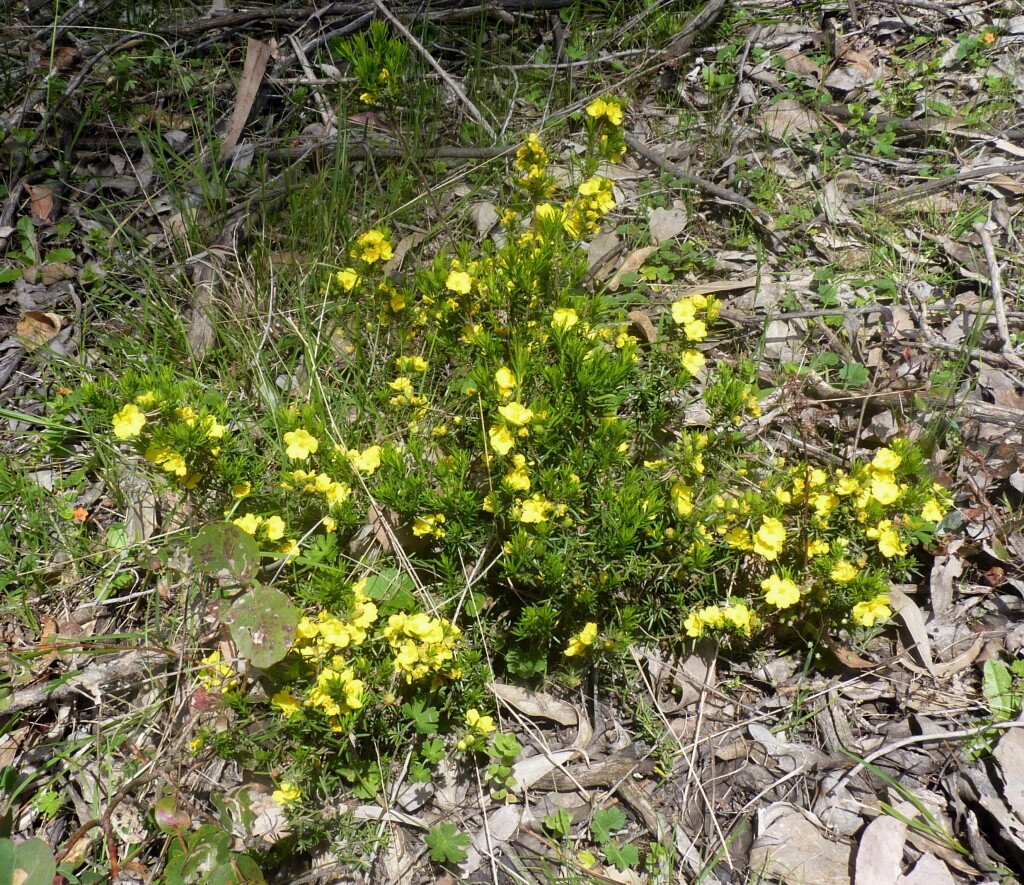Hibbertia
Shrubs, rarely climbers, with simple and/or often stellate hairs. Leaves alternate, rarely (not in Victoria) opposite, sessile to petiolate, without stipules but often with axillary tufts of hairs, entire, rarely toothed or lobed, flat or ericoid. Flowers sessile or pedunculate, terminal and single or rarely in cymose clusters (H. sericea complex), rarely (not in Victoria) in terminal bracteose inflorescences; sepals 5, often slightly connate, outer 3 often different in shape, size and vestiture from inner 2, often enlarging after flowering; petals 5, apex varying from obtuse to bilobed, sometimes within a population, yellow or white, deciduous; stamens 3–many in a complete ring or in 5 groups around carpels, or in one group dorsal to carpels; filaments free to almost completely connate; anthers poral and/or with vertical slits, lateral to introrse; carpels 2–5, free, erect and with terminal styles, to recurved with styles attached dorsally, with 2–8 ovules. Fruit a follicle; seeds with or without a more or less lobed aril, rarely (not in Victoria) completely enclosed.
Over 120 species, mainly in Australia (all States), but also New Guinea, some Pacific islands and Madagascar.
The delineation of the taxa of this genus is often difficult because many Australian species grow in scattered or disjunct populations, often with local variants. A revision of the genus is in progress and the conservative approach taken here often results in the species accepted representing complexes which include taxa not yet fully delineated. Not all herbarium records will have been verified against the most recent taxonomy, consequently, mapping of some species may contain erroneous records.
Toelken, H.R. (1996). Dilleniaceae. In: Walsh, N.G.; Entwisle, T.J., Flora of Victoria Vol. 3, Dicotyledons Winteraceae to Myrtaceae, pp. 300–313. Inkata Press, Melbourne.
 Spinning
Spinning



